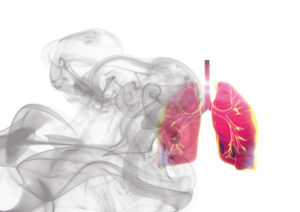How occupational safety and health positively contributes to the employer’s image
According to the Federal Statistical Office, respiratory diseases accounted for 14.5 percent of all days of incapacity to work in 2020. This indicates that respiratory diseases are the third most common cause for an employee to take sick leave in Germany – after diseases of the musculoskeletal system and mental illnesses. Employers can prevent absenteeism among their employees with the help of occupational safety and health measures. At the same time, these measures strengthen the positive perception of the company because the message to employees and potential applicants is: Your health is important to us.
 But what do occupational health and safety measures have to do with the image of the employer? Companies that want to shape and strengthen their employer brand depend on a positive external image. These companies present themselves as particularly innovative or socially committed, for example, or exceptionally flexible in the way they produce and work. The aim is to stand out from competitors – not only at the product level, but also at the personnel level.
But what do occupational health and safety measures have to do with the image of the employer? Companies that want to shape and strengthen their employer brand depend on a positive external image. These companies present themselves as particularly innovative or socially committed, for example, or exceptionally flexible in the way they produce and work. The aim is to stand out from competitors – not only at the product level, but also at the personnel level.
In addition to flexible working hours and interesting career opportunities, companies are increasingly focusing on the issue of employee health. And that is where occupational health and safety plays a decisive role. Because companies that care about the health of their employees offer the highest standards of occupational health and safety.
From protective equipment to ergonomic workplaces
In companies where hazardous substances are processed or hazardous vapours and gases are generated in the processing procedure, occupational safety is a matter of course. But not all occupational safety and health is the same. The measures range from the ergonomic design of the workplace to the installation of suction and filter units and personal protective equipment (PPE)In industrial manufacturing, welding fume extraction systems play an important role in protecting the health of welders and other employees working on the production floor. Welding fumes are a health hazard. Welders and people directly exposed to welding fumes are 43 percent more likely to develop lung cancer than the comparison population. This was the finding of a cohort study in the journal Occupational and Environmental Medicine, which analysed the health data of 17 million welders worldwide. The study was based on 45 previously published research reports. However, the cohort study does not distinguish between different welding methods.
In industrial manufacturing, it is no longer only health and safety at the workplace that is of great importance, but also hygiene. Companies can meet the employees’ desire for a clean workplace with a functioning welding fume extraction system. When welding fumes are effectively extracted from the air, less smoke is deposited in the production halls. The result is cleaner workplaces, better work results – and satisfied employees in the long term.
Satisfied and loyal employees
 Reservations about the purchase of suction and filter units are unfounded. Because nothing changes in the work processes, in the way of welding, for example. It is just different equipment that is used. This does require the employer to be willing to invest but the financial commitment to employee health pays off in the long run. The appreciation that the employer shows towards its employees through these investments ensures more satisfaction in the workforce and, in the best case, increased loyalty towards the employer. In times of a shortage of skilled workers, companies are well advised to retain the employees they have.
Reservations about the purchase of suction and filter units are unfounded. Because nothing changes in the work processes, in the way of welding, for example. It is just different equipment that is used. This does require the employer to be willing to invest but the financial commitment to employee health pays off in the long run. The appreciation that the employer shows towards its employees through these investments ensures more satisfaction in the workforce and, in the best case, increased loyalty towards the employer. In times of a shortage of skilled workers, companies are well advised to retain the employees they have.
A survey conducted by Randstad Sourceright in 2021 shows that employees attach great importance to health protection. In the first quarter, the recruitment company surveyed 800 managers in 17 countries online. The result was that the health of employees is very important to 62 per cent of companies. Also interesting is a survey conducted by Randstad in March 2020: 41 per cent of German employees demanded health protection in the sense of sustainability from their employers. Admittedly, these results must be viewed against the background of the pandemic: Sensitivity to occupational health has increased during this time. But even after the pandemic, the issue of health and safety at work will play a major role in companies. The implementation of successful occupational health and safety measures will have a lasting positive impact on the employer’s image, the survey states.
International comparison
In an international comparison, however, German companies do not pay enough attention to their employer brand. According to a study by an international employer branding consultancy that is part of StepStone, German companies do not see the targeted development of an employer brand as a strategic issue. Many companies still know too little about their own employees and potential applicants. However, in view of the increasing shortage of skilled workers, companies will have to deal with their profile as an employer.


